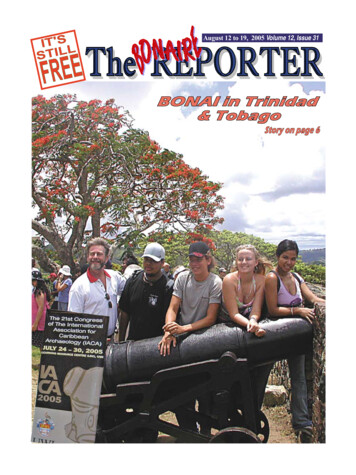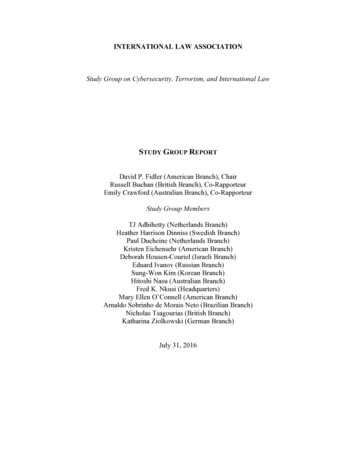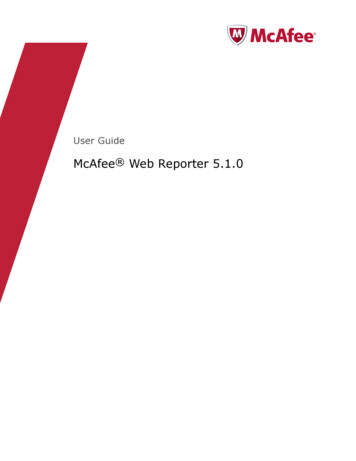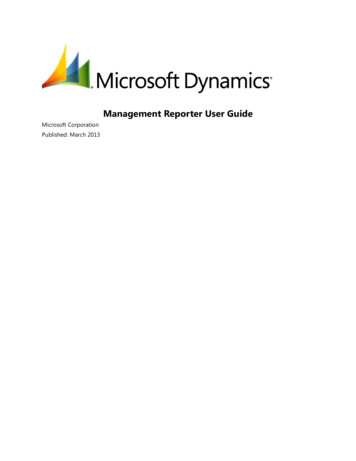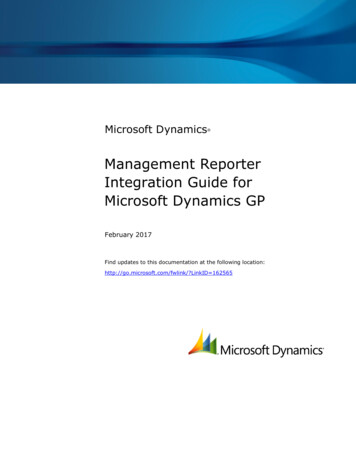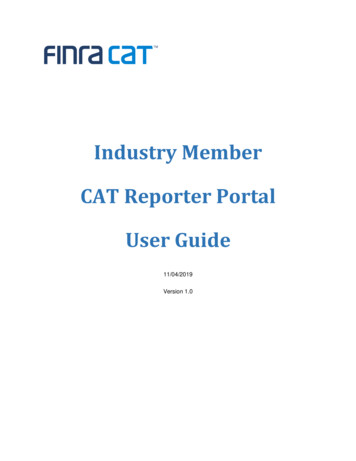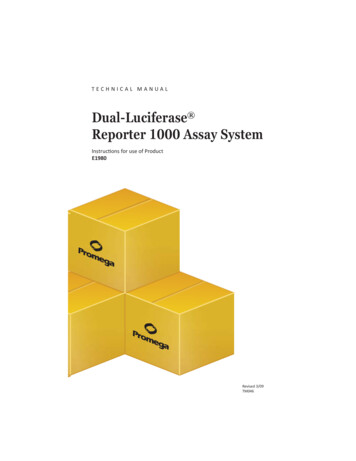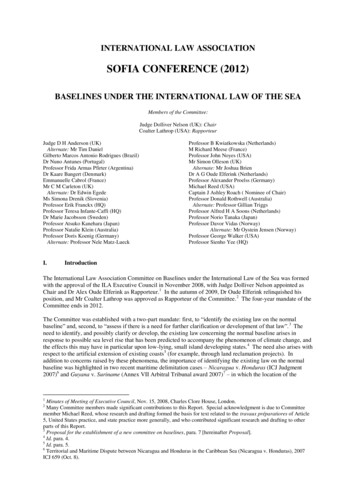
Transcription
INTERNATIONAL LAW ASSOCIATIONSOFIA CONFERENCE (2012)BASELINES UNDER THE INTERNATIONAL LAW OF THE SEAMembers of the Committee:Judge Dolliver Nelson (UK): ChairCoalter Lathrop (USA): RapporteurJudge D H Anderson (UK)Alternate: Mr Tim DanielGilberto Marcos Antonio Rodrigues (Brazil)Dr Nuno Antunes (Portugal)Professor Frida Armas Pfirter (Argentina)Dr Kaare Bangert (Denmark)Emmanuelle Cabrol (France)Mr C M Carleton (UK)Alternate: Dr Edwin EgedeMs Simona Drenik (Slovenia)Professor Erik Franckx (HQ)Professor Teresa Infante-Caffi (HQ)Dr Marie Jacobsson (Sweden)Professor Atsuko Kanehara (Japan)Professor Natalie Klein (Australia)Professor Doris Koenig (Germany)Alternate: Professor Nele Matz-LueckI.Professor B Kwiatkowska (Netherlands)M Richard Meese (France)Professor John Noyes (USA)Mr Simon Olleson (UK)Alternate: Mr Joshua BrienDr A G Oude Elferink (Netherlands)Professor Alexander Proelss (Germany)Michael Reed (USA)Captain J Ashley Roach ( Nominee of Chair)Professor Donald Rothwell (Australia)Alternate: Professor Gillian TriggsProfessor Alfred H A Soons (Netherlands)Professor Norio Tanaka (Japan)Professor Davor Vidas (Norway)Alternate: Mr Oystein Jensen (Norway)Professor George Walker (USA)Professor Sienho Yee (HQ)IntroductionThe International Law Association Committee on Baselines under the International Law of the Sea was formedwith the approval of the ILA Executive Council in November 2008, with Judge Dolliver Nelson appointed asChair and Dr Alex Oude Elferink as Rapporteur.1 In the autumn of 2009, Dr Oude Elferink relinquished hisposition, and Mr Coalter Lathrop was approved as Rapporteur of the Committee. 2 The four-year mandate of theCommittee ends in 2012.The Committee was established with a two-part mandate: first, to “identify the existing law on the normalbaseline” and, second, to “assess if there is a need for further clarification or development of that law”. 3 Theneed to identify, and possibly clarify or develop, the existing law concerning the normal baseline arises inresponse to possible sea level rise that has been predicted to accompany the phenomenon of climate change, andthe effects this may have in particular upon low-lying, small island developing states.4 The need also arises withrespect to the artificial extension of existing coasts5 (for example, through land reclamation projects). Inaddition to concerns raised by these phenomena, the importance of identifying the existing law on the normalbaseline was highlighted in two recent maritime delimitation cases – Nicaragua v. Honduras (ICJ Judgment2007)6 and Guyana v. Suriname (Annex VII Arbitral Tribunal award 2007)7 – in which the location of the1Minutes of Meeting of Executive Council, Nov. 15, 2008, Charles Clore House, London.Many Committee members made significant contributions to this Report. Special acknowledgment is due to Committeemember Michael Reed, whose research and drafting formed the basis for text related to the travaux préparatiores of Article5, United States practice, and state practice more generally, and who contributed significant research and drafting to otherparts of this Report.3Proposal for the establishment of a new committee on baselines, para. 7 [hereinafter Proposal].4Id. para. 4.5Id. para. 5.6Territorial and Maritime Dispute between Nicaragua and Honduras in the Caribbean Sea (Nicaragua v. Honduras), 2007ICJ 659 (Oct. 8).2
2normal baseline was in question.8 Finally, the normal baseline is of fundamental importance for theconstruction of other types of baselines that do not follow the sinuosities of the coast, including straightbaselines, archipelagic baselines, and bay and river closing lines. 9 These ‘straight line’ baselines are notconsidered in any detail in this report. The normal baseline along ice-covered coast is also not dealt with in thisReport.10 The Committee notes that straight baselines and baselines along ice-covered coasts could be thesubjects of additional reports produced under a new or extended mandate.In order to satisfy its mandate, the Committee drafted an internal discussion document for consideration at theAugust 2010 ILA biennial meeting in The Hague. The Committee considered the internal discussion documentin a closed meeting and in an open working session held from 18-19 August 2010. A draft final report wasproduced on the basis of those discussions, and taking into account comments from Committee Members andnon-members, and also responses of Committee Members to an ad hoc series of questions formulated by theRapporteur focusing on issues of state practice concerning baselines. The draft final report was circulated toCommittee Members on 18 January 2012 and was discussed during an inter-sessional Committee meetingconvened in Hamburg, Germany on 16-17 March 2012. A revised draft final report was subsequently submittedto the Committee on 18 May 2012, and this final report was submitted to ILA headquarters in advance of the 8June 2012 deadline. This final Report takes account of comments submitted by Committee Members bothduring and subsequent to the Hamburg inter-sessional meeting.This Report introduces the issues, identifies the existing law concerning the normal baseline, and suggestspossible clarification or development of that law. The Committee has set out the relevant backgroundinformation on the origin and significance of the normal baseline and has sought to highlight the interests ofvarious actors in the location of the baseline (Section II). The Committee has investigated the meaning of theconventional law of normal baselines, including an analysis of the travaux préparatiores, and an assessment ofother sources of law. On the basis of this analysis, the Committee has stated its conclusions concerning theexisting law on the normal baseline (Section III). The Committee considers the impact on the normal baselineof territorial gain and territorial loss from, for example, the construction of coastal defenses or the effects of sealevel rise (Section IV). Finally, the Committee’s assessment of the need for further clarification or developmentof the law of normal baselines is set forth (Section V). The Annex to this Report provides a brief description ofthe technical reasons for the difference – in some circumstances – between the charted low-water line and theactual low-water line.II.The Normal Baseline: Origin, Significance, and InterestsA.OriginArticle 5 of the United Nations Convention on the Law of the Sea (UNCLOS or the 1982 Convention) definesthe normal baseline. The normal baseline article is concise, providing that:Except where otherwise provided in this Convention, the normal baseline for measuring thebreadth of the territorial sea is the low-water line along the coast as marked on large-scalecharts officially recognized by the coastal State. 117Award of the Arbitral Tribunal in the Matter of an Arbitration between Guyana and Suriname (Guyana v. Suriname), 47ILM 166 (2008) (Sept. 17, 2007), available at e%20Award.pdf.8See Proposal, supra note 3, para. 2.9See id. para. 3. These ‘straight line’ baselines include Article 7 straight baselines, Article 9 baselines across the mouths ofrivers, Article 10 bay closing lines, and Article 47 archipelagic baselines. It should be noted that the low-water line serves asthe anchor for these ‘straight line’ baselines. To be valid in international law each of these baselines – which deviate fromthe location of the normal baseline – still must attach to or link up with the low-water line at their endpoints, andintermediate turning points. So, while the focus of this report is on the normal baseline, the issues raised here between thecharted and actual low-water line are no less important for locating the other baselines contemplated in the Convention.10The issue of the normal baselines along ice-covered coasts was introduced during the open working session of 19 August2010. Baselines under the International Law of the Sea, REPORT OF THE 74TH CONFERENCE 827, 833 (2010) (Noyes). Thequestion of whether ice may be treated as ‘land’ under certain circumstances is not resolved.11United Nations Convention on the Law of the Sea, Dec. 10, 1982, 1833 UNTS 397. The first clause in this article refers toother baseline provisions within the Convention, including Article 7 (straight baselines), Article 9 (mouths of rivers), andArticle 10 (bays). 2
3Although seemingly straightforward, the Committee notes that the concise language of Article 5 has beeninterpreted and applied in two ways:(1) the normal baseline is the low-water line depicted on the charts officially recognized by the coastal State; or(2) the normal baseline is the low-water line along the coast at the vertical, or tidal, datum indicated on thecharts officially recognized by the coastal State. 12The application of the first interpretation would lead to the conclusion that the charted low-water line is the legalnormal baseline and the chart itself is the legal document that determines the position of that baselineirrespective of the physical realities of the coast. The second interpretation would support a conclusion that theactual low-water line is the legal normal baseline and that charts, although not insignificant, are notdeterminative of the location of the normal baseline under Article 5 of the 1982 Convention. Under the latterinterpretation adjudicators may consider evidence of the physical coastal realities or the actual coastalconfiguration notwithstanding the depiction of the normal baseline on officially recognized charts.Prescott and Schofield have framed this issue, referring to several prominent members of this Committee,including Christopher Carleton, Alex Oude Elferink, and Michael Reed. They write:Under normal circumstances it might be considered that the low-water line shown on a chartofficially recognized by a country is the baseline from which its territorial sea is measured andthat this will prevail in any dispute. That is certainly the attitude of the British and Dutchgovernments (Carleton, pers. comm., 2001; [Oude] Elferink, pers. comm., [May] 2001).According to this view it is the chart that is the legal document determining the position of thenormal baseline and this remains the case even where the coastline’s configuration haschanged. Thus, if the coastline has altered, but it has not been published, the legal baseline isthat on the published chart. Where this is the case, the normal baseline will only come toreflect the physical change in the coastline if a fresh survey is undertaken and the chartcorrespondingly updated (Carleton and Schofield, 2001: 24-25).However, Reed (2000: 180) records that members of the International Law Commission,during the preparation of draft articles for the 1958 Convention, expressed views that if thecharted baseline departed appreciably from the actual low-water line the chart could bechallenged in any legal tribunal. There does not appear to be any precise definition of theterm ‘appreciably’ found in the travaux préparatoires. Reed records that in domestic caseseven minor deviations have been raised and taken into account (Reed, 2000: 182). 13The Committee notes that the issue of the interpretation of Article 5 is largely academic. It is often thecase that the application of either interpretation will result in the same line or in lines that differ in veryminor ways. In these circumstances the issue addressed herein does not arise or is not one with which thelaw concerns itself – de minimis non curat lex. However, in some circumstances the application of thecompeting interpretations could result in normal baselines that are appreciably different – in absolutespatial terms – or that are different in small but important ways. 14The question before the Committee is, in essence, whether the Article 5 normal baseline is a line on a chart (thecharted low-water line) or a line on the ‘ground’ (the actual low-water line). And, depending on the answer tothat question, what are the implications when this rule is applied in practice in a variety of current and readilyforeseeable situations involving territorial loss or gain? Recognizing that the location of these two lines can besubstantially different, the Committee notes that the interpretation of Article 5 may have significant real-worldconsequences.12The concept of vertical or tidal datums is instrumental to understanding the baselines issue. “In UNCLOS analysis,‘datum (vertical)’ or ‘vertical datum’ means any level surface, e.g., mean sea level, taken as a surface of reference fromwhich elevations may be reckoned”. DEFINITIONS FOR THE LAW OF THE SEA: TERMS NOT DEFINED BY THE 1982 CONVENTION163 (George K. Walker ed., 2012). See the Annex to this Report for a complete explanation of datums and how they impactthe location of the normal baseline and the depiction of that line on nautical charts.13VICTOR PRESCOTT & CLIVE SCHOFIELD, THE MARITIME POLITICAL BOUNDARIES OF THE WORLD 101 (2d ed. 2005).14For example, the transformation of a low-tide elevation into a fully submerged feature could result from only a smallphysical change but could significantly reduce the size of a state’s territorial sea. 3
4B.SignificanceThe baseline is the legal expression of a state’s coast, which, in turn, functions as an intermediary for the landterritory of a coastal State in the determination of maritime zones and the generation of maritime rights andjurisdiction. As the International Court of Justice noted, “[t]he land is the legal source of the power which aState may exercise over territorial extensions to seaward”.15 Weil expands on this fundamental notion, writingthat maritime rights “have been based on two principles which have acquired an almost idiomatic force . . . : theland dominates the sea and it dominates it by the intermediary the coastal front.” 16 The ICJ emphasized theimportance of the coast in this context:What distinguishes a coastal State with [maritime] rights from a landlocked State which hasnone, is certainly not the landmass, which both possess, but the existence of a maritime frontin one State and its absence in the other. The juridical link between the State’s territorialsovereignty and its rights to certain adjacent maritime expanses is established by means of itscoast.17The Committee notes that the coast, and the baseline to the extent that it represents the coast, 18 is foundational tothe very concept of maritime jurisdiction.The baseline issue may be conceptualized in a number of ways. For example, the baseline plays three distinctroles. First, the baseline divides land territory, including internal waters, from the territorial sea. 19 Thenavigational rights of flag states and the rules relating to jurisdiction over foreign vessels differ substantiallybetween internal waters and the territorial sea. Specifically, the right of innocent passage does not exist ininternal waters, with one exception.20 Coastal State regulations may also differ between these two zones. It istherefore important for citizens and foreigners alike to know where the line of division – the baseline – islocated.Second, the outer limits of the territorial sea,21 contiguous zone,22 exclusive economic zone,23 and, under certaincircumstances, the continental shelf24 are measured from the baseline and are delineated on the basis of thatmeasurement. Here too, the rights and duties of the coastal state and of other ocean users will differsubstantially depending upon the jurisdictional zone. 25 A coastal state’s exploitation of offshore naturalresources and a flag state’s navigation through maritime areas provide two examples of activities for which theassociated rights and duties differ substantially depending upon the jurisdictional zone in which those activitiesoccur.Third, baselines are often the starting point for determining title to maritime areas subject to overlapping coastalstate claims.26 It is this third role – the role of baselines in the bilateral delimitation of maritime boundaries –15North Sea Continental Shelf (Federal Republic of Germany/Denmark; Federal Republic of Germany/Netherlands), 1969ICJ 3, 51 (Feb. 20).16PROSPER WEIL, THE LAW OF MARITIME DELIMITATION – REFLECTIONS 50 (1989). Weil borrows the phrase “the landdominates the sea” from the North Sea judgment. North Sea, supra note 15, at 51.17Continental Shelf (Libyan Arab Jamahiriya/Malta), 1985 ICJ 13, 41 (June 3).18The term ‘coast’ is broader than the term ‘baseline’, but undoubtedly the low-water line is part of the coast. ‘Coast’ isdefined as “the edge or margin of land next to the sea”. DEFINITIONS, supra note 12, at 130. An earlier version of theInternational Hydrographic Organization glossary defines “coast” as “The sea-shore. The narrow strip of land in immediatecontact with any body of water, including the area between high- and low-water lines”. Quoted in id. at 131.19See United Nations Convention on the Law of the Sea, supra note 11, art. 8(1) (“[W]aters on the landward side of thebaseline of the territorial sea form part of the internal waters of the State”.).20See id. art. 8(2) (“Where the establishment of a straight baseline in accordance with the method set forth in article 7 hasthe effect of enclosing as internal waters areas which had not previously been considered as such, a right of innocent passageas provided in this Convention shall exist in those waters”.).21Id. art. 3.22Id. art. 33(2).23Id. art. 57.24Id. art. 76(1), (5) & (6).25In some federal states the federated states or entities within the country may have jurisdiction over certain maritime areasoff their coasts. While the rules governing the relationship between the federal and regional powers within a federation arenot part of international law, the relationship can give rise to judicial consideration of international law rules (such as thosegoverning baselines) within municipal legal systems.26In Romania v. Ukraine the Court distinguishes the role of baselines in the delineation of the outer limits of maritime zonesfrom their role in the delimitation of a boundary between two states. Maritime Delimitation in the Black Sea (Romania v. 4
5that, at least in part, prompted the formation of this Committee. 27 Parties in two recent maritime delimitationcases argued, among other things, “that the baselines depicted on the chart did not reflect the situation on theground”.28 Other cases have raised related issues.29 As noted above, it is land territory, with the coast asintermediary, which generates entitlements to maritime area. As such, coastal geography is of paramountimportance in delimiting boundaries between coastal states with overlapping claims to maritime areas.The territorial sea delimitation provisions of the 1958 Convention and 1982 Convention refer to baselines. 30With an exception for historic title and other special circumstances, Article 15 of the 1982 Convention providesthat:[w]here the coasts of two States are opposite or adjacent to each other, neither of the twoStates is entitled, failing agreement between them to the contrary, to extend its territorial seabeyond the median line every point of which is equidistant from the nearest points on thebaselines from which the breadth of the territorial seas of each of the two States is measured. 31As a consequence, the location of the baseline is a primary consideration in the delimitation of lateral oropposite territorial sea boundaries. In contrast, the 1982 Convention delimitation provisions for the exclusiveeconomic zone and continental shelf do not refer to baselines as a starting point. However, the maritimedelimitation jurisprudence appears to give a procedural presumption to the construction of a provisionaldelimitation line measured from baselines.32These three roles – (1) division of territory/internal waters from territorial sea, (2) delineation of outer limits ofmaritime jurisdictional zones, and (3) delimitation of boundaries dividing one state’s maritime area from anotherstate’s maritime area – may also be separated or grouped on the basis of their unilateral or bilateral aspects. Thefirst and second roles of baselines share a common characteristic: they both establish the outer limits of coastalstate jurisdiction beyond which flag states or the international community enjoy different rights from thoseenjoyed in various coastal zones. In these two roles, the establishment, maintenance, notification, and use of thebaseline are prerogatives of the coastal state. 33 The baseline, although it impacts interests beyond the coastalstate, is largely a unilateral concern weighted heavily toward the interests of the coastal state. It is not, however,purely unilateral. The inherent tension between unilateral prerogative and multilateral interest is captured in theFisheries case. The ICJ wrote:The delimitation of sea areas has always an international aspect; it cannot be dependentmerely upon the will of the coastal State as expressed in its municipal law. Although it is truethat the act of delimitation [of baselines and outer limits] is necessarily a unilateral act,Ukraine), 2009 ICJ 61, 108 (Feb. 3) (“The Court observes that the issue of determining the baseline for the purpose ofmeasuring the breadth of the continental shelf and the exclusive economic zone and the issue of identifying base points fordrawing an equidistance/median line for the purpose of delimiting continental shelf and exclusive economic zone betweenadjacent/opposite States are two different issues”.).27Historically, the word ‘delimitation’ has been used to refer to the bilateral process of boundary making between twoneighboring coastal states and to the unilateral process of establishing the outer limits of various maritime zones. Here weuse the word ‘delimitation’ to refer only to the former and the word ‘delineation’ to refer to the latter. Where, in quotations,‘delimitation’ has been used to refer to the establishment of outer limits, we note this use for the sake of clarity.28Proposal, supra note 3 (referring to Nicaragua v. Honduras and Guyana v. Suriname).29See, e.g., Continental Shelf (United Kingdom/France), XVIII RIAA 271 (Mar. 14, 1978); Award of the Arbitral Tribunalin the second stage of the proceedings between Eritrea and Yemen (Maritime Delimitation) (Eritrea/Yemen), XXII RIAA335 (Dec. 17, 1999); Maritime Delimitation and Territorial Questions between Qatar and Bahrain (Qatar v. Bahrain), 2001ICJ 40 (Mar. 16); Land and Maritime Boundary between Cameroon and Nigeria (Cameroon v. Nigeria: Equatorial Guineaintervening), 2002 ICJ 303 (Oct. 10); Romania v. Ukraine, supra note 26; Dispute concerning delimitation of the maritimeboundary between Bangladesh and Myanmar in the Bay of Bengal (Bangladesh/Myanmar), ITLOS Case No. 16 (Mar. 14,2012).30Convention on the Territorial Sea and the Contiguous Zone, art. 12, Apr. 29, 1958, 516 UNTS 206.31United Nations Convention on the Law of the Sea, supra note 11, art. 15 (emphasis added).32See Romania v. Ukraine, supra note 26; Bangladesh/Myanmar, supra note 29. In practice, courts and tribunals havedisregarded specific base points in delimitations that would be legitimate base points for measuring the outer limits ofmaritime zones. See, e.g., Ukraine’s Serpents’ Island, Romania’s Sulina Dyke, and Bangladesh’s Saint Martin’s Island.33See, e.g., United Nations Convention on the Law of the Sea, supra note 11, arts. 3 (“Every State has the right to establishthe breadth of its territorial sea . . . measured from baselines determined in accordance with this Convention”.), 5 (“chartsofficially recognized by the coastal State”), and 14 (“The coastal State may determine baselines in turn by any of themethods provided for . . .”.). 5
6because only the coastal State is competent to undertake it, the validity of the delimitationwith regard to other States depends upon international law. 34In contrast, in the delimitation role a coastal state’s baseline is a bilateral concern, and it is, in the case ofadjudication, the court or tribunal’s prerogative to determine the location of baselines and, in some instances, todisregard a claimed baseline in part or in its entirety. 35Lastly, baseline rules may be considered in light of two different contexts in which they are applied. The first iswhen a coastal State defines and regulates the status of its territorial sea and other maritime zones, usually bymeans of domestic legislation. Here, the baseline rules are intended to be applied in a domestic setting and onan enduring basis. The second is when a base point or subsection of a baseline is subject to examination at aparticular time, for example, following an arrest or incident at sea or in the context of maritime boundarynegotiations or litigation. In these latter circumstances, baseline rules are applied in a much more restrictedcontext where questions of evidence assume greater importance.These different roles of baselines and conceptualizations of the issue do not affect the Committee’s assessmentof the existing law on the normal baseline. However, they may affect the manner in which a baseline question isposed or – in the event of litigation – the way in which a challenge to a baseline is framed, including thepossible litigants and venue. For example, bilateral delimitation cases are heard in public international lawforums, while claims challenging the right of coastal States to enforce its laws in areas defined on the basis ofdistance from baselines are more likely to be heard in the national courts of the enforcing coastal State. It is notsurprising therefore that the issue of baselines has come to the attention of the ILA following variousinternational maritime delimitation cases.36C.InterestsMany different interests are at play with respect to the location of baselines. Churchill and Lowe, referring tothe desirability of precise baseline rules, highlight the role of state self-interest: the interest of the coastal Statein moving baselines seaward against the interest of all other States. They write:If the rules are not sufficiently precise, it may be possible for a State to draw its baselines in agenerous manner, thus pushing the outer limit of its territorial sea and other zones seawardsand bringing greater areas of sea within internal waters, thus reducing the areas of seaavailable for use by other States.37Of course, it is not just internal waters, but the extent of all maritime zones measured from baselines that wouldbe affected by the coastal State’s ‘generous’ drawing of its baselines. In a subsequent delimitation ofoverlapping zones, these baselines might be challenged by a neighboring state.Sub-state political units may have an interest in the location of the baseline if it separates or is linked to the lineseparating their areas from the area of the state. This is the situation as between the United States of Americaand its coastal federated states, and has given rise to several cases before the U.S. Supreme Court in which thelocation of the baseline was at issue.38Private actors may have an interest in the location of baselines and the outer limits of zones measured therefrom.Consider, for example, a vessel fishing in the vicinity of the outer limit of the exclusive economic zone, or alessee with a license to explore or exploit natural resources within, but not beyond, the outer limit of a state’smaritime area. Any private actor involved with maritime transportation will have an interest in the location ofbaselines and outer limits, as would defendants raising certain jurisdictional defenses in the courts of a coastal34Fisheries (United Kingdom v. Norway), 1951 ICJ 116, 132 (Dec. 18) (addressing the unilateral act of declaring straightbaselines; however, the same issues apply with respect to normal baselines).35See Romania v. Ukraine, supra note 26 (disregarding points on Romania’s straight baseline, including the seaward end ofSulina dyke); Nicaragua v. Honduras, supra note 6 (disregarding Honduran straight baselines).36Klein notes that “[i]t is most typical that a challenge to baselines will ensue in the context of a delimitation between Stateswith opposite or adjacent coasts”. NATALIE KLEIN, DISPUTE SETTLEMENT IN THE UN CONVENTION ON THE LAW OF THE SEA268 (2005).37R.R. CHURCHILL & A.V. LOWE, THE LAW OF THE SEA 32 (3d ed. 1999).38See infra section III.C.2. 6
7State. In all of these examples, private actors may find themselves contesting the coastal State’s officialbaseline, perhaps on the grounds that it does not reflect the physical realities of the actual low-water line.Prescott and Schofield note that[i]n practice it seems likely that the dispute over whether the charted or actual low-water lineshould prevail will only arise in two situations. The first is when a country realises that theactual line lies significantly seawards of the charted line. The second is when a foreigner,accused of improperly entering a maritime zone, realises that the actual line lies significantlylandwards of the low-water line shown on the chart.39As demonstrated in maritime delimitation cases there is a third situation in which a coastal state may contest itsneighbor’s asserted baseline when it realizes that the actual line lies significantly landwards of the charted line.Finally, there is a special category of coastal State with an existential interest in this issue. The Committeerefers here to the low-lying, small island developing states that may be particularly vulnerable to the effects ofsea level rise. It is possible that some of these States could lose the entirety of their territory to the sea, andthereby the basic qualifications of statehood itself.40 The plight of these States contributed to the formation ofthis Committee, and, certainly, they have a unique interest in the subject of this Report. The existing law of thenormal baseline as it affects the interests of small island developing states is addressed in Section IV.B.III.The Normal B
Report.10 The Committee notes that straight baselines and baselines along ice-covered coasts could be the subjects of additional reports produced under a new or extended mandate. In order to satisfy its mandate, the Committee drafted an internal discussion document for consideration at the August 2010 ILA biennial meeting in The Hague.



